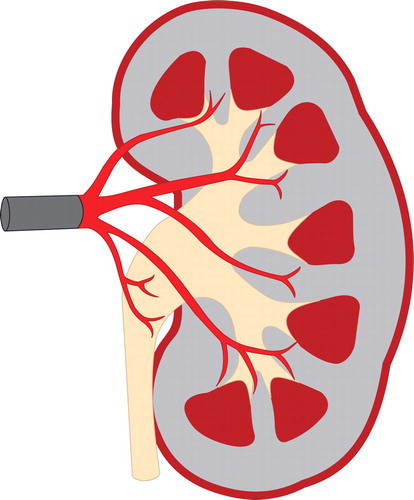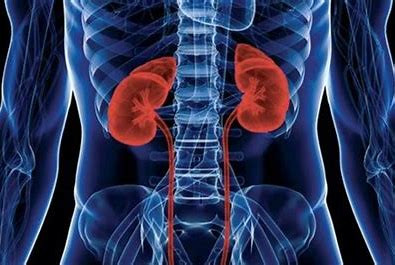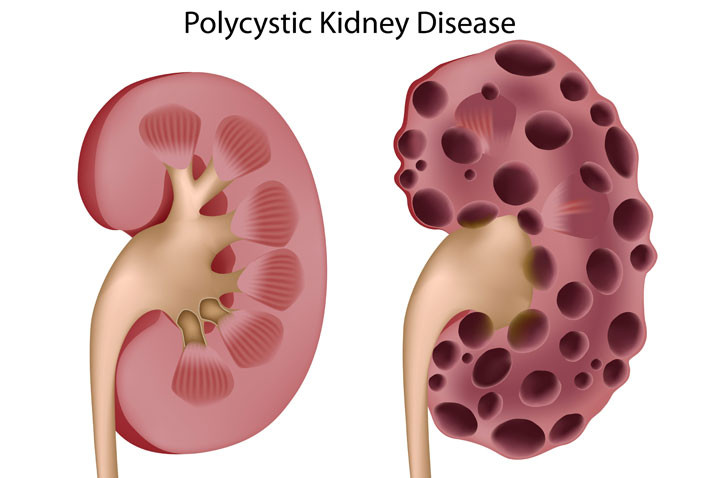Definition
Kidney rupture is a medical condition where the kidney experiences rupture or tearing due to external force. The organ is located near the middle of the back and under the ribs, protected by back muscles, abdominal muscles, and ribs. However, the underside of the kidney is not protected by ribs, making it susceptible to injury.
Any type of trauma to the kidneys can disrupt kidney function. Trauma or injury can occur as a result of:
- Blunt trauma, which can damage the kidney organ without affecting the skin due to strong external impact.
- Sharp object trauma, which can damage the kidney organ when sharp objects penetrate the skin and enter the body.
The kidney is a primary organ that functions as a filter, cleaning blood every day and removing excessive fluid and metabolic waste from the blood. Normally, urine flows down from the kidneys to the bladder and finally to the urethra for expulsion.
When kidney damage occurs, the kidneys cannot function properly. Bleeding and injuries can lead to urine leakage. Approximately 80-90% of kidney injury cases are caused by blunt trauma to the abdomen. The severity of the disease and the mortality rate depend greatly on the severity of the injury, wounds, and trauma, as well as the therapy administered. Severe kidney damage may require more intensive treatment, such as hemodialysis or blood cleansing.
Causes
Kidney rupture can occur spontaneously or alongside injuries to other organs. The kidney, being a part of the urinary system, is particularly susceptible to injury, especially in cases of severe trauma. Blunt trauma more commonly leads to kidney rupture than sharp trauma.
Examples of blunt trauma to the kidneys include direct blows to the kidney. Blunt trauma can result from various incidents, such as:
- Traffic accidents, with children being particularly vulnerable to kidney rupture in such events.
- Falls from heights.
- Sports accidents.
- Impact from heavy objects, especially in the kidney area.
- Sudden deceleration of the body after rapid movement.
On the other hand, sharp object injuries to the kidneys can be caused by:
- Knives.
- Gunshot wounds.
- Other sharp objects.
Risk factor
The kidneys rank as the third most commonly injured organ due to blunt trauma to the abdomen. These injuries predominantly affect young adult males engaged in sports, involved in motor vehicle accidents, or subjected to violence. Kidney rupture frequently occurs in sports characterized by high contact, including:
- American Football
- Rugby
- Ice hockey
- Football
- Horseback riding
- Gymnastics
- Boxing, and others.
Children are particularly vulnerable to internal injuries due to less body fat surrounding their kidneys. Moreover, children's kidneys are less shielded by the ribcage as they are positioned deeper in the abdomen.
Symptoms
Generally, kidney rupture is classified into five grades based on its severity. Grade one indicates a mild injury, akin to bruises, while grade five denotes the most severe injury where the kidney is shattered and disconnected from its blood supply.
The symptoms of kidney rupture also vary depending on the type of injury. In cases of blunt trauma, patients may experience hematuria, the presence of blood in the urine. Sometimes, blood may be visible to the naked eye, while in other cases, it can only be detected under a microscope. Blunt trauma to the kidney may also be asymptomatic, or there may be bruising in the area along the back or abdomen where the kidney is located.
On the other hand, sharp object injuries to the kidney may be suspected if there are wounds from knives, bullets, or other sharp objects piercing the skin. Sometimes, the skin wound may also be at a considerable distance from the kidney organ.
Diagnosis
The diagnosis of kidney rupture typically involves a combination of medical interview, physical examination, and diagnostic tests, as necessary and available.
During the medical interview, the doctor will inquire about the patient's current symptoms and the history of the incident. In cases of kidney rupture, the doctor may observe tenderness upon palpation in the lower back or abdomen area, along with bruising or scars located near the kidneys.
Diagnostic tests, such as urinalysis with dipstick, can assess for minimal or microscopic hematuria. When kidney damage is suspected, imaging examinations become crucial to evaluate the condition of both kidneys. These tests confirm the diagnosis and provide information about the severity of the rupture or damage.
A contrast-enhanced CT scan is often considered the optimal choice for effectively assessing kidney rupture. Additionally, ultrasound (USG) can be used in diagnosing kidney trauma, although it may not offer the same level of detail as a CT scan.
Management
The management of kidney rupture depends on the patient's condition. If they are stable and there is no damage to other organs, trauma can be treated without surgery. However, patients will typically be hospitalized until there is no blood in the urine, and the bleeding will be closely monitored.
On the other hand, if the patient is unstable and experiencing massive blood loss, surgical intervention is considered necessary for treating kidney rupture. Blood transfusion may be administered as needed. The goal of treatment is to control bleeding and preserve as much kidney function as possible.
Complications
The most common complication of kidney rupture is active bleeding. If bleeding persists, it can lead to a critical condition, necessitating immediate treatment to prevent further blood loss. Active bleeding is commonly observed in kidney ruptures classified as degrees 4 and 5.
Prevention
Kidney rupture can result from both blunt trauma and injuries caused by sharp objects. Therefore, it's important to exercise caution when driving and participating in sports. Utilize protective gear during exercise and outdoor activities to minimize the risk of injury. When involving children in activities, ensure their protection and limit their participation in activities with potential risks.
When to see a doctor?
Kidney rupture can result from both blunt trauma and injuries caused by sharp objects. Therefore, it's important to exercise caution when driving and participating in sports. Utilize protective gear during exercise and outdoor activities to minimize the risk of injury. When involving children in activities, ensure their protection and limit their participation in activities with potential risks.
Looking for more information about other diseases? Click here!
- dr Hanifa Rahma
Singh S, Sookraj K. Kidney Trauma. [Updated 2022 Apr 30]. In: StatPearls [Internet]. Treasure Island (FL): StatPearls Publishing; 2022 Jan-. Available from: https://www.ncbi.nlm.nih.gov/books/NBK532896/
Urology Care Foundation. Kidney (Renal) Trauma. July 2022. https://www.urologyhealth.org/urology-a-z/k/kidney-(renal)-trauma
University of Connecticut. Kidney Injury. July 2022. https://ksi.uconn.edu/emergency-conditions/internal-trauma/kidney-injury/#












